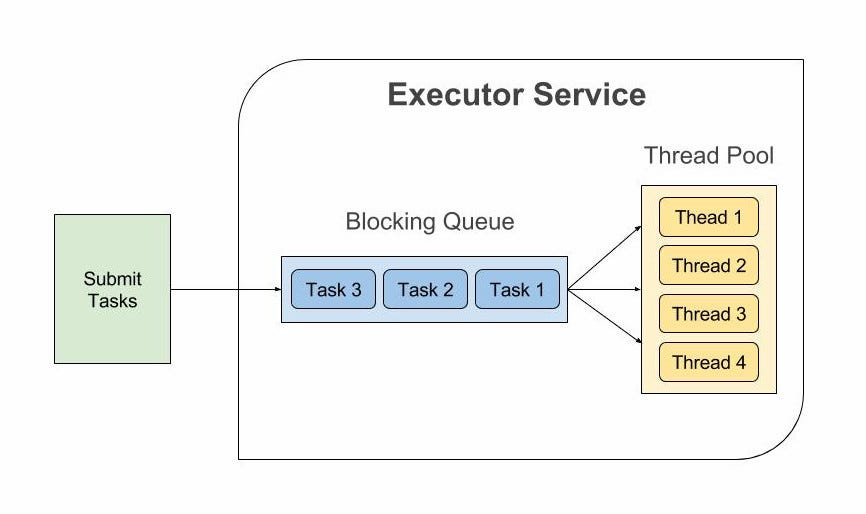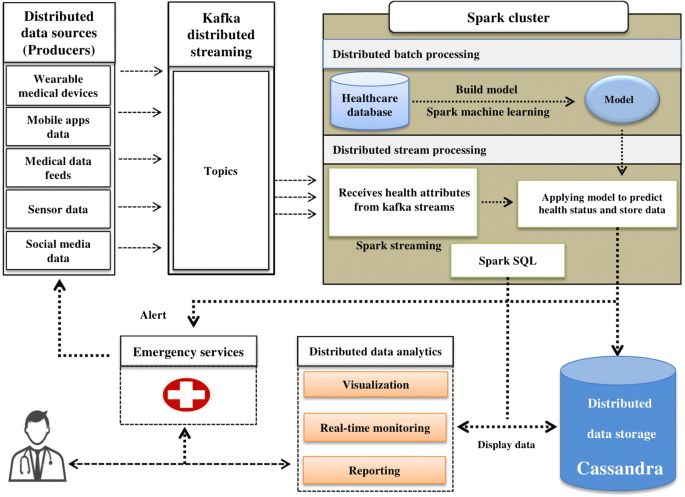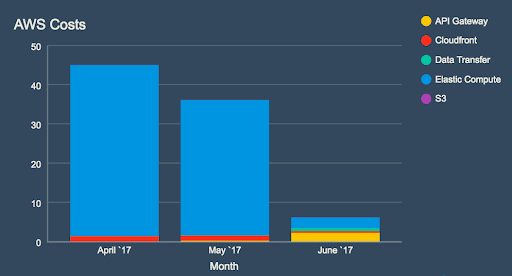The Java ecosystem is in a constant state of evolution, and one of the most significant recent developments is happening in the realm of concurrency. For years, developers have grappled with the complexities of multithreaded programming, using tools like ExecutorService and CompletableFuture. While powerful, these approaches often lead to “unstructured” concurrency, where the lifecycle of child threads can become detached from their parent, resulting in resource leaks, complex error handling, and code that is difficult to reason about. The latest Java concurrency news, driven by Project Loom, introduces a paradigm shift: Structured Concurrency. This new model aims to bring the clarity and reliability of single-threaded structured programming—like if/else blocks and try-catch statements—to the world of concurrent execution. This article provides a comprehensive look into Java’s structured concurrency, exploring its core concepts, practical implementations, and its transformative impact on the entire Java ecosystem news landscape.
Understanding the Core Concepts of Structured Concurrency
Structured concurrency is a programming model that treats multiple tasks running in different threads as a single unit of work. The fundamental principle is that if a task splits into multiple concurrent subtasks, they must all complete before the main task can proceed. This creates a clear hierarchical relationship and a well-defined scope for concurrent operations, which is a cornerstone of the recent Project Loom news. This model is built around a new API, primarily the StructuredTaskScope class, which was introduced as a preview feature in recent JDK versions, making it a hot topic in Java 21 news.
The StructuredTaskScope API: Your New Concurrency Workhorse
The StructuredTaskScope is the entry point for structured concurrency. It establishes a boundary for a set of concurrent tasks. The typical workflow follows a simple pattern:
- Create a Scope: You instantiate a
StructuredTaskScope, typically within atry-with-resourcesblock to ensure it’s always closed. - Fork Subtasks: Inside the scope, you use the
fork()method to submit tasks (asCallableorRunnable). Each call tofork()starts a new task, often on a new virtual thread, and returns aFuturerepresenting its eventual result. - Join and Wait: You call the
join()method on the scope. This blocks the parent thread until all subtasks have completed. - Process Results: After
join()returns, you can safely process the results from the completed tasks.
This structure guarantees that the code following the try-with-resources block will not execute until all forked tasks within that scope have terminated, either successfully or by failing. This eliminates the risk of orphaned threads or resource leaks common in unstructured models. Let’s see a practical example.
import java.util.concurrent.StructuredTaskScope;
import java.util.concurrent.Future;
import java.time.Duration;
public class UserDataAggregator {
// A mock method to simulate fetching user details from a database
String fetchUserDetails(int userId) throws InterruptedException {
Thread.sleep(Duration.ofMillis(100)); // Simulate I/O latency
return "User Details for " + userId;
}
// A mock method to simulate fetching user orders from another service
String fetchUserOrders(int userId) throws InterruptedException {
Thread.sleep(Duration.ofMillis(150)); // Simulate I/O latency
return "Orders for " + userId;
}
public String fetchUserData(int userId) throws Exception {
// Use try-with-resources to ensure the scope is always closed
try (var scope = new StructuredTaskScope.ShutdownOnFailure()) {
// Fork the first task. It will run in a new virtual thread.
Future<String> userDetailsFuture = scope.fork(() -> fetchUserDetails(userId));
// Fork the second task. It will also run in a new virtual thread.
Future<String> userOrdersFuture = scope.fork(() -> fetchUserOrders(userId));
// Wait for both tasks to complete. If any task fails, this will throw an exception.
scope.join();
scope.throwIfFailed(); // Propagate exception if any subtask failed
// Both tasks have completed successfully. Retrieve the results.
String userDetails = userDetailsFuture.resultNow();
String userOrders = userOrdersFuture.resultNow();
return String.format("Combined Data: [%s, %s]", userDetails, userOrders);
}
}
public static void main(String[] args) throws Exception {
var aggregator = new UserDataAggregator();
System.out.println(aggregator.fetchUserData(123));
}
}Implementation Details and Shutdown Policies

One of the most powerful features of the StructuredTaskScope API is its explicit handling of failure scenarios through shutdown policies. Instead of complex error-handling logic with callbacks or manual future management, you define the desired behavior upfront. This is a significant piece of Java SE news that simplifies concurrent error propagation.
The ShutdownOnFailure Policy
ShutdownOnFailure is the most common policy. It embodies the “all or nothing” principle. If any subtask within the scope fails (throws an exception), the scope immediately cancels all other running subtasks and the join() method completes. The exception from the failed task is then available to be re-thrown by the parent thread. This “fail-fast” behavior is crucial for efficiency, as it prevents wasting resources on tasks whose results are no longer needed.
import java.util.concurrent.StructuredTaskScope;
import java.util.concurrent.Future;
import java.time.Duration;
public class FailureHandlingDemo {
// A task that succeeds after a delay
String successfulTask() throws InterruptedException {
System.out.println("Successful task started...");
Thread.sleep(Duration.ofSeconds(2));
System.out.println("Successful task finished."); // This line will not be reached
return "Success";
}
// A task that fails quickly
String failingTask() {
System.out.println("Failing task started...");
throw new IllegalStateException("Something went wrong!");
}
public void demonstrateFailure() {
try (var scope = new StructuredTaskScope.ShutdownOnFailure()) {
Future<String> successFuture = scope.fork(this::successfulTask);
Future<String> failureFuture = scope.fork(this::failingTask);
System.out.println("Waiting for tasks to complete...");
scope.join(); // This will return quickly after failingTask throws
// This line is optional as join() propagates the exception in this case
// scope.throwIfFailed();
} catch (Exception ex) {
System.err.println("Caught exception from scope: " + ex.getMessage());
// The successfulTask was cancelled because the failingTask failed.
}
}
public static void main(String[] args) {
new FailureHandlingDemo().demonstrateFailure();
}
}In this example, failingTask() throws an exception almost immediately. The ShutdownOnFailure policy detects this, cancels the still-running successfulTask(), and the join() call completes, allowing the exception to be caught and handled in the main flow. This is a massive improvement in clarity and reliability over traditional concurrent models.
The ShutdownOnSuccess Policy
The ShutdownOnSuccess policy is designed for “racing” scenarios where you need the result from the first task to complete successfully. This is useful for invoking redundant services for improved latency or fault tolerance. Once one task succeeds, the scope cancels all other tasks and makes the result available via the result() method.
import java.util.concurrent.StructuredTaskScope;
import java.util.concurrent.ExecutionException;
import java.time.Duration;
public class SuccessRaceDemo {
// A fast service
String queryFastService() throws InterruptedException {
Thread.sleep(Duration.ofMillis(50));
return "Result from fast service";
}
// A slower, backup service
String querySlowService() throws InterruptedException {
Thread.sleep(Duration.ofMillis(200));
return "Result from slow service";
}
public String getFirstResult() throws InterruptedException, ExecutionException {
try (var scope = new StructuredTaskScope.ShutdownOnSuccess<String>()) {
scope.fork(this::queryFastService);
scope.fork(this::querySlowService);
// Join and wait for the first successful result
scope.join();
// Get the result from the first task to complete successfully
return scope.result();
}
}
public static void main(String[] args) throws Exception {
var demo = new SuccessRaceDemo();
System.out.println("And the winner is: " + demo.getFirstResult());
}
}Advanced Techniques and Ecosystem Integration
Structured concurrency is not just an isolated API; it’s designed to integrate seamlessly with the modern Java ecosystem, especially with Java virtual threads news. Each task forked within a StructuredTaskScope is typically executed on a new virtual thread, making it incredibly cheap and efficient to launch thousands or even millions of concurrent operations without the overhead of traditional platform threads.

Integration with the Spring Framework
While the Spring news and Spring Boot news cycles haven’t yet announced deep, native integration for structured concurrency, developers can immediately leverage it within their Spring applications. It provides a compelling alternative to @Async or reactive programming with Project Reactor for certain use cases, especially I/O-bound fan-out operations. The imperative, sequential-looking code is often easier to debug and maintain than complex reactive chains. This makes it a significant development to watch in the broader Jakarta EE news space as well, as other frameworks will likely follow suit.
/*
* Assume this is in a Spring Boot application with the necessary dependencies.
* You would need to enable preview features in your build tool (Maven/Gradle).
* For Maven's pom.xml:
* <build>
* <plugins>
* <plugin>
* <groupId>org.apache.maven.plugins</groupId>
* <artifactId>maven-compiler-plugin</artifactId>
* <configuration>
* <release>21</release>
* <compilerArgs>--enable-preview</compilerArgs>
* </configuration>
* </plugin>
* </plugins>
* </build>
*/
import org.springframework.stereotype.Service;
import org.springframework.web.client.RestTemplate;
import java.util.concurrent.StructuredTaskScope;
import java.util.concurrent.Future;
// A simple DTO for the example
record ProductInfo(String details, String inventory) {}
@Service
public class ProductService {
private final RestTemplate restTemplate = new RestTemplate();
// Mock external service URLs
private final String detailsServiceUrl = "http://api.example.com/products/{id}/details";
private final String inventoryServiceUrl = "http://api.example.com/products/{id}/inventory";
public ProductInfo getProductInfo(String productId) {
// Using structured concurrency inside a Spring service
try (var scope = new StructuredTaskScope.ShutdownOnFailure()) {
Future<String> detailsFuture = scope.fork(() ->
restTemplate.getForObject(detailsServiceUrl, String.class, productId)
);
Future<String> inventoryFuture = scope.fork(() ->
restTemplate.getForObject(inventoryServiceUrl, String.class, productId)
);
scope.join();
scope.throwIfFailed();
return new ProductInfo(detailsFuture.resultNow(), inventoryFuture.resultNow());
} catch (Exception e) {
// Handle exceptions, perhaps throw a custom service exception
throw new RuntimeException("Failed to fetch product info", e);
}
}
}Best Practices and Common Pitfalls
As with any new technology, adopting structured concurrency requires understanding best practices to maximize its benefits and avoid common pitfalls. This is crucial for improving Java performance news and writing robust applications.
Key Best Practices

- Always Use
try-with-resources: This is the most critical practice. It guarantees that the scope is closed and all subtasks are properly managed, even in the face of exceptions, preventing resource leaks. - Choose the Right Policy: Understand the difference between
ShutdownOnFailureandShutdownOnSuccess. Use the former for “all-or-nothing” aggregations and the latter for “racing” for the first result. - Keep Subtasks Independent: Ideally, subtasks forked within a scope should not depend on each other’s results. If they do, you might need to structure your code with multiple, nested scopes.
Common Pitfalls to Avoid
- Forgetting to
join(): If you forget to calljoin(), your main thread will not wait for the subtasks to complete. Thetry-with-resourcesblock will close, potentially cancelling tasks before they are finished. - Ignoring Exceptions: After calling
join()in aShutdownOnFailurescope, you must check for failures, typically by callingscope.throwIfFailed(). Ignoring this can lead to silent failures where you try to access results from futures that never completed successfully. - Leaking the Scope or Futures: Never pass the scope instance or the futures it creates to an outside method. The scope and its subtasks are meant to be confined to a single, lexical block of code.
Conclusion: The Dawn of a New Concurrent Era
Structured concurrency, powered by Project Loom and its virtual threads, represents one of the most exciting advancements in the JVM news landscape in over a decade. It fundamentally changes how we write, read, and reason about concurrent code in Java. By enforcing a clear lifecycle and hierarchy on concurrent tasks, it eliminates entire classes of bugs related to thread leaks and complex error handling. The resulting code is not only more robust and reliable but also significantly easier to maintain.
As this feature moves from preview to a finalized state in upcoming Java releases, developers should begin experimenting with it. Set up your Maven news or Gradle news build files to enable preview features and start refactoring small, I/O-bound sections of your applications. The shift to structured concurrency is more than just a new API; it’s a paradigm shift that promises to make concurrent programming in Java as simple and intuitive as its single-threaded counterpart. The future of Java concurrency is structured, and it is here now.

